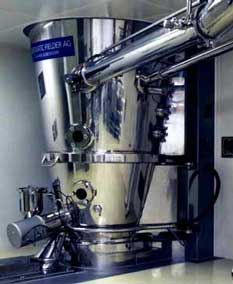In an earlier post, Trends in Process Analytical Technology and Quality by Design, I highlight a point made in the video, “…PAT methods around product moisture, which projected a $2 million annual savings in improved product quality.” The methodology used for the project to achieve these results was highlighted in a post, Using Operational Excellence Techniques to Understand and Solve Business Problems.
I asked Emerson’s Michalle Adkins, a senior consultant on the Life Sciences industry team, for any additional background on this project that I might be able to share with you.The Emerson team worked with a pharmaceutical manufacturer to develop a proof of concept pilot that monitored the moisture in real time on a fluidized bed dryer unit operation, monitored coating of beads in a coating process, and monitored blending of materials in a blending operation. The proof of concept generated enough data and demonstrated that the drying process could be characterized.
Additionally, this is where the team analyzed the process to determine the benefits and develop the return on investment (ROI) analysis for the project. Upon completion of this analysis, it was projected that there is a potential for $2 million in savings for implementing the solutions on these unit operations.
So the next step, once the proof of concept was completed, was to determine where to start. The drying operation was chosen for the next step. The existing control strategy measured exit air temperature to determine the operation’s endpoint. The variability of moisture content results in unnecessarily extended drying times, ineffective use of resources, and adjustments in the downstream process that lead to unwanted waste.
The solution was to use a process analytical technology (PAT)-based solution where an online NIR (near infrared) analyzer would be used to measure the fluidized bed dryer’s contents in real time and end the operation when the contents reach its moisture specification level.
Getting the moisture level right had many benefits. Over drying the batch contents is a source of flaking tablets, resulting in waste. Under drying the contents causes the powder to stick to the punch tools increasing maintenance costs and reducing yield. Decreasing drying times result in increased production capacity, reduced energy usage and lower labor costs on a per batch basis. Since moisture was one of the key quality parameters, reduced variability and higher overall quality could be maintained batch after batch, resulting in better processing downstream which can affect downstream yield.
The architected PAT solution included an NIR analyzer, PAT server with synTQ analyzer and data management software and the existing plant control system and network. The PAT server initializes the NIR analyzer operation when the drying unit operation begins. It verifies communications between the PAT server and control system. It then initiates the PAT instrument sequence, runs the process model that converts the NIR analyzer spectral data into the critical quality parameters including moisture, and writes these parameters back to the operators’ workstations and control system, which can then initiate the control system’s cool down and shutdown sequences.
Because of the documented results from this project, the pharmaceutical manufacturer is looking to expand this PAT solution across all of the fluid bed dyers across their manufacturing sites.
Michalle and the Life Sciences industry consultants have an Ask an expert page where you can ask specific questions about the Operational Excellence process or any other question relating to automation and data management for pharmaceutical and biotech manufacturers. You can also connect and interact with them in the Life Sciences track of the Emerson Exchange 365 community.

